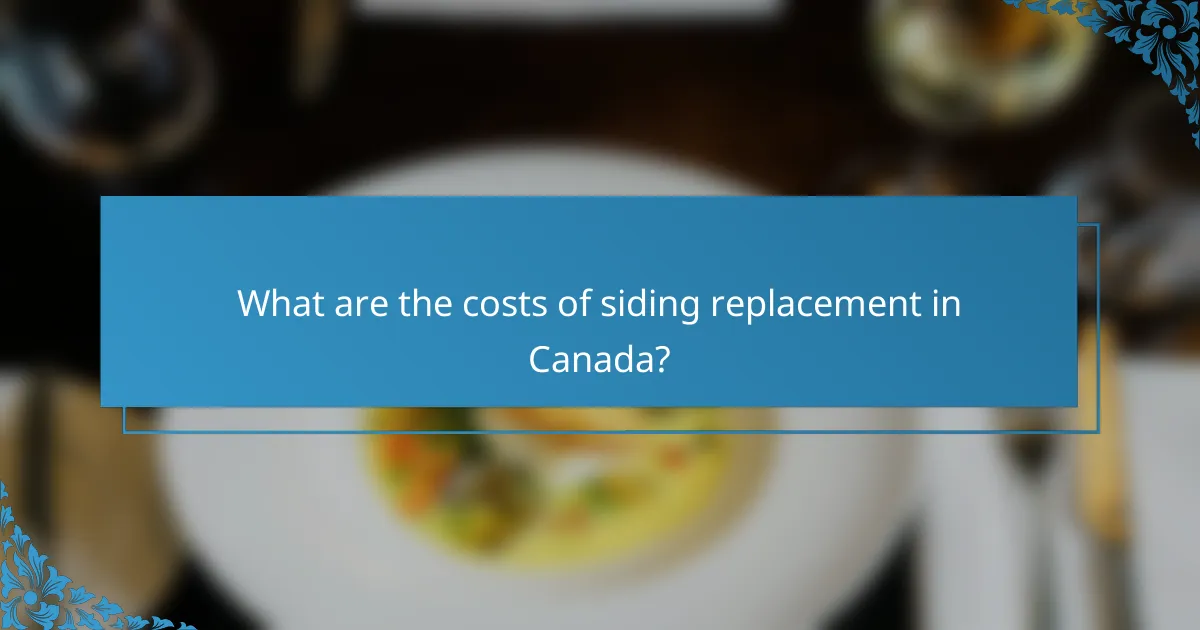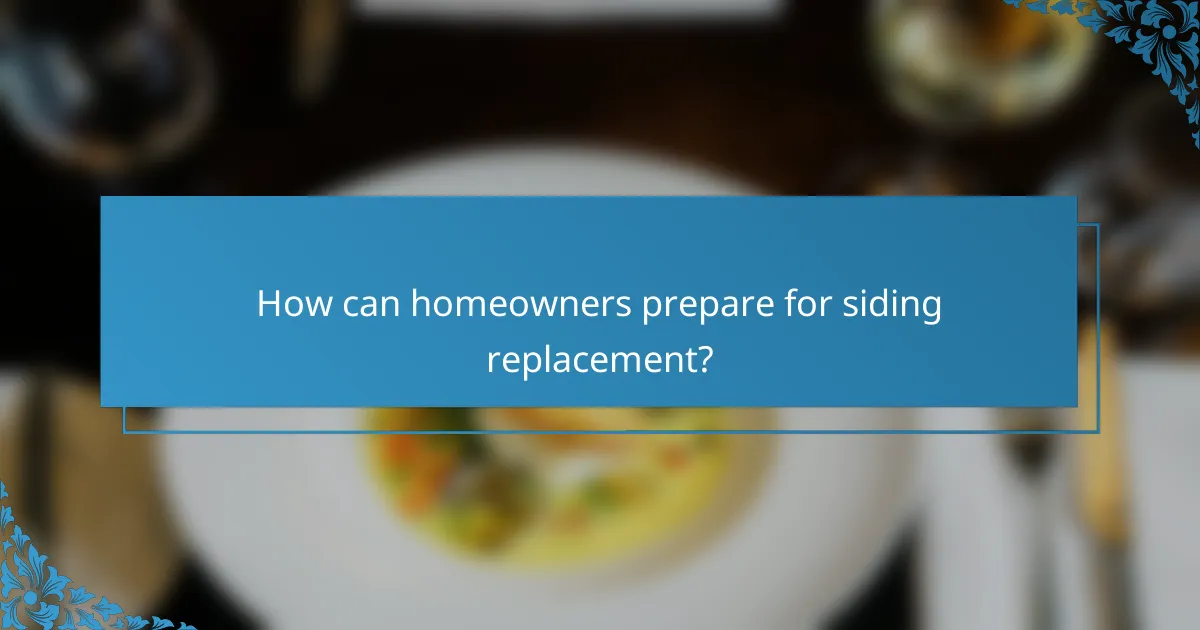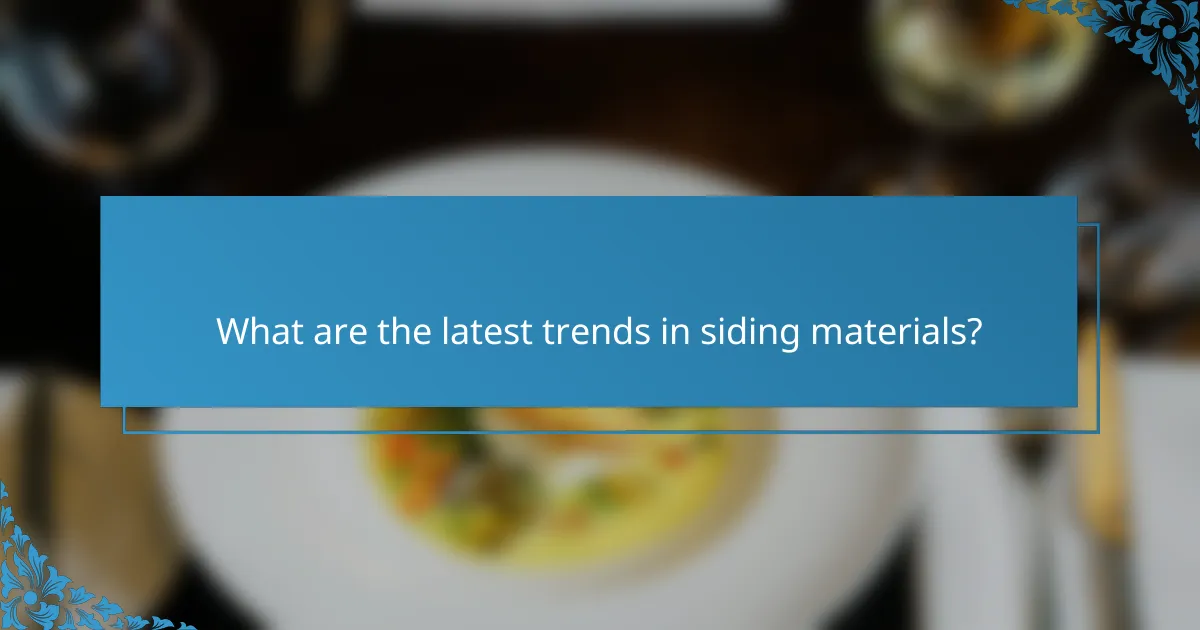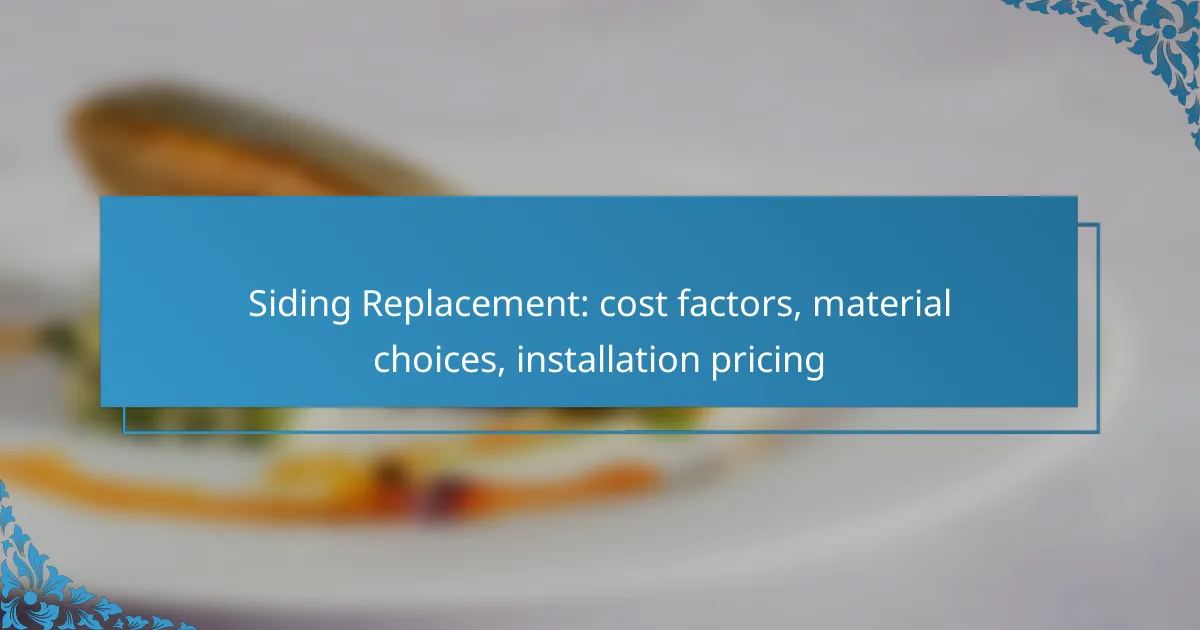Siding replacement is a significant investment for homeowners, with costs in Canada typically ranging from several thousand to over ten thousand Canadian dollars. Factors such as material choice, installation complexity, and regional pricing variations play a crucial role in determining the overall expense. With options like vinyl, wood, and fiber cement available, understanding the unique characteristics and costs of each material is essential for making an informed decision.

What are the costs of siding replacement in Canada?
The costs of siding replacement in Canada typically range from several thousand to over ten thousand Canadian dollars, depending on various factors such as material choice and installation complexity. Homeowners should consider these elements to budget effectively for their siding project.
Average cost range for siding replacement
The average cost for siding replacement in Canada generally falls between CAD 5,000 and CAD 15,000. This range can vary significantly based on the type of siding material selected, the size of the home, and regional labor rates.
For instance, vinyl siding tends to be on the lower end of the spectrum, while materials like wood or fiber cement can push costs higher. It’s advisable to obtain multiple quotes to ensure competitive pricing.
Factors influencing siding costs
Geographic location also plays a role, as labor rates can differ across provinces and cities. Seasonal demand may impact pricing as well, with peak construction seasons potentially leading to higher costs. Homeowners should plan ahead and consider these variables when budgeting for their siding replacement project.

What materials are available for siding replacement?
There are several materials available for siding replacement, each with unique characteristics, benefits, and costs. The most common options include vinyl, wood, and fiber cement, which cater to different aesthetic preferences and budget considerations.
Vinyl siding characteristics
Vinyl siding is a popular choice due to its affordability and low maintenance requirements. It is made from polyvinyl chloride (PVC) and is available in a variety of colors and styles, allowing for customization to match different home designs.
This material is resistant to rot and insects, making it a durable option. However, it can become brittle in extreme temperatures and may fade over time, so consider the climate when selecting vinyl siding.
Wood siding benefits
Wood siding offers a classic and natural aesthetic that many homeowners appreciate. It provides excellent insulation and can be painted or stained in various colors, allowing for flexibility in design.
While wood siding can be more expensive than vinyl, it requires regular maintenance, such as painting or sealing, to protect against moisture and pests. This upkeep is essential to prolong its lifespan and maintain its appearance.
Fiber cement siding features
Fiber cement siding combines cement, sand, and cellulose fibers, resulting in a strong and durable material. It is fire-resistant and can withstand harsh weather conditions, making it a long-lasting option for homeowners.
Although fiber cement siding can be pricier upfront compared to vinyl and wood, its longevity and low maintenance needs often justify the investment. It can mimic the appearance of wood or stucco, providing versatility in design without sacrificing durability.

How does installation pricing vary in Canadian cities?
Installation pricing for siding replacement can differ significantly across Canadian cities due to factors like labor costs, material availability, and local regulations. Understanding these variations can help homeowners budget effectively for their projects.
Installation costs in Toronto
In Toronto, installation costs for siding typically range from CAD 5 to CAD 15 per square foot, depending on the material chosen and the complexity of the job. Factors such as the height of the building and accessibility can further influence pricing.
Homeowners should consider obtaining multiple quotes from local contractors to ensure competitive pricing. It’s also advisable to check for any city-specific regulations that might affect installation, such as permits or zoning laws.
Installation costs in Vancouver
Vancouver’s siding installation costs generally fall between CAD 6 and CAD 16 per square foot. The higher end of this range often reflects premium materials or intricate designs that require skilled labor.
As in Toronto, it’s beneficial for homeowners in Vancouver to gather several estimates and inquire about any additional costs related to local building codes or environmental regulations. This approach can help avoid unexpected expenses during the installation process.

What are the key factors affecting siding replacement costs?
Siding replacement costs are influenced by various factors, including labor rates, material choices, and installation complexities. Understanding these elements can help homeowners budget effectively and make informed decisions about their siding projects.
Labor costs in local markets
Labor costs for siding installation can vary significantly based on geographic location. In urban areas, skilled labor may command higher rates, while rural regions often have lower labor costs. Homeowners should expect to pay anywhere from $30 to $70 per hour for professional installation, depending on local market conditions.
It’s essential to obtain multiple quotes from contractors to ensure competitive pricing. Additionally, consider the contractor’s experience and reputation, as these factors can also impact overall labor costs and the quality of work.
Material quality impacts
The quality of siding materials directly affects both the initial cost and long-term durability of the installation. Options range from budget-friendly vinyl to premium materials like fiber cement or wood, with prices typically varying from $2 to $10 per square foot. Higher-quality materials may require a larger upfront investment but can lead to lower maintenance costs over time.
When selecting siding materials, consider factors such as climate, aesthetic preferences, and energy efficiency. Investing in high-quality materials can enhance your home’s value and reduce the need for frequent repairs or replacements.

What are the benefits of professional siding installation?
Professional siding installation offers expertise, quality assurance, and long-term value, ensuring that your home’s exterior is both aesthetically pleasing and durable. Hiring professionals can save time and reduce the risk of costly mistakes during the installation process.
Expertise and quality assurance
Professionals bring extensive knowledge and experience to siding installation, which translates to better workmanship and adherence to local building codes. They are skilled in selecting the right materials and techniques suited for your specific climate and home structure.
Quality assurance is a significant benefit; many professional installers follow industry standards and best practices, which can lead to improved energy efficiency and longevity of the siding. This expertise minimizes the likelihood of issues such as leaks or warping that can arise from improper installation.
Warranty and long-term value
Many professional siding installations come with warranties that cover both materials and labor, providing peace of mind for homeowners. This warranty can protect your investment and ensure that any future repairs or replacements are handled without additional costs.
Investing in professional installation can enhance your home’s value over time. Properly installed siding not only improves curb appeal but also contributes to energy savings, potentially lowering heating and cooling costs by maintaining better insulation.

How can homeowners prepare for siding replacement?
Homeowners can prepare for siding replacement by assessing their current siding condition and researching suitable materials and contractors. Understanding the costs involved and local regulations will also help streamline the process.
Choosing the right contractor
Selecting a qualified contractor is crucial for a successful siding replacement. Look for professionals with experience, positive reviews, and proper licensing and insurance. Request multiple quotes to compare pricing and services offered.
Check references and past project portfolios to ensure the contractor’s work aligns with your expectations. A good contractor will also provide a detailed contract outlining the scope of work, materials, and timeline.
Understanding permits and regulations
Before starting a siding replacement project, homeowners should familiarize themselves with local building permits and regulations. Many municipalities require permits for exterior renovations, which can vary based on the type of siding being installed.
Consult your local building department to determine necessary permits and any specific codes that must be followed. Ignoring these regulations can lead to fines or the need for costly rework, so it’s essential to ensure compliance from the outset.

What are the latest trends in siding materials?
The latest trends in siding materials focus on sustainability, durability, and aesthetic appeal. Homeowners are increasingly opting for products that not only enhance the look of their homes but also minimize environmental impact.
Eco-friendly siding options
Eco-friendly siding options are gaining popularity as more homeowners prioritize sustainability. Materials such as reclaimed wood, fiber cement, and vinyl made from recycled content offer durability while reducing environmental footprints.
When considering eco-friendly siding, look for certifications like Energy Star or Green Seal. These labels indicate that the materials meet specific environmental standards, ensuring responsible sourcing and manufacturing practices.
Innovative design trends in siding
Innovative design trends in siding include bold colors, mixed materials, and textured finishes. Homeowners are experimenting with contrasting elements, such as pairing smooth fiber cement with rustic wood, to create visually striking facades.
Another trend is the use of vertical siding, which can make a home appear taller and more modern. This design choice, combined with unique color palettes, allows for personalized expressions that stand out in the neighborhood.
